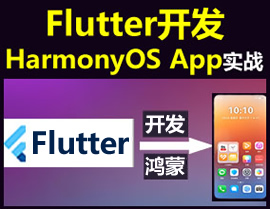HarmonyOS 鸿蒙Next如何监测屏幕的横竖屏切换?
HarmonyOS 鸿蒙Next如何监测屏幕的横竖屏切换?
import window from '@ohos.window';
import display from ‘@ohos.display’;
const TAG = ‘foo’
const ORIENTATION: Array<string> = [‘垂直’,‘平’, ‘反向垂直’, ‘反向水平’]
struct OrientationPage {
@State rotation: number = 0
@State message: string = ORIENTATION[this.rotation]
@Watch(‘setWindowLayOut’)
@State isLandscape: boolean = false;// 是否横屏状态
aboutToAppear() {
this.setOrientation(1)
let callback = async () => {
let d = await display.getDefaultDisplaySync()
this.rotation = d.rotation
this.message = ORIENTATION[this.rotation]
console.info(TAG, JSON.stringify(d))
}
try {
display.on(“change”, callback);//监听屏幕状态改变
} catch (exception) {
console.error(TAG, 'Failed to register callback. Code: ’ + JSON.stringify(exception));
}
}
setOrientation(type : number) {
try {
window.getLastWindow(getContext(this), (err, data) => {
//获取window实例
if (err.code) {
console.error(TAG, 'Failed to obtain the top window. Cause: ’ + JSON.stringify(err));
return;
}
let windowClass = data; console.info(TAG, 'Succeeded in obtaining the top window. Data: ’ + JSON.stringify(data));
let orientation : number;
if (type === 1) {
orientation = window.Orientation.AUTO_ROTATION; //设置窗口方向为传感器自动旋转模式。
} else {
orientation = window.Orientation.UNSPECIFIED; //设置窗口方向为传感器锁定。
}
try {
windowClass.setPreferredOrientation(orientation, (err) => {
if (err.code) {
console.error(TAG, 'Failed to set window orientation. Cause: ’ + JSON.stringify(err));
return;
}
console.info(TAG, ‘Succeeded in setting window orientation.’);
});
} catch (exception) {
console.error(TAG, 'Failed to set window orientation. Cause: ’ + JSON.stringify(exception));
} ;
});
} catch (exception) {
console.error(TAG, 'Failed to obtain the top window. Cause: ’ + JSON.stringify(exception));
} ;
}
setWindowLayOut() {
// 调用该接口手动改变设备横竖屏状态(设置全屏模式,先强制横屏,再加上传感器模式)
window.getLastWindow(getContext(this)).then((windowClass) => {
if (this.isLandscape) {
console.log(‘设置屏幕横屏’)
windowClass.setPreferredOrientation(window.Orientation.AUTO_ROTATION_LANDSCAPE);
} else {
console.log(‘设置屏幕竖屏’)
windowClass.setPreferredOrientation(window.Orientation.AUTO_ROTATION_PORTRAIT);
}
});
}
build() {
Row() {
Column() {
Text(${<span class="hljs-keyword"><span class="hljs-keyword">this</span></span>.rotation})
.fontSize(25)
Text(${<span class="hljs-keyword"><span class="hljs-keyword">this</span></span>.message})
.fontSize(25)
Button(‘全屏’)
.width(140)
.onClick(() => {
this.isLandscape = !this.isLandscape; // 设置横屏
});
}
.width(“100%”)
}
.height(‘100%’)
}
}
更多关于HarmonyOS 鸿蒙Next如何监测屏幕的横竖屏切换?的实战系列教程也可以访问 https://www.itying.com/category-93-b0.html
HarmonyOS 鸿蒙Next监测屏幕的横竖屏切换,可以通过监听屏幕状态改变事件来实现。以下是具体方法:
首先,需要在应用的模块配置文件module.json5中配置相关设置,确保应用具备横竖屏切换能力。如果希望横竖屏切换受系统控制(打开自动旋转生效,关闭失效),可以将"orientation"属性设置为"auto_rotation_restricted"。
其次,在应用代码中,可以使用ArkUI框架提供的display模块来监听屏幕状态改变。通过调用display.on(“change”, callback)方法,可以注册一个回调函数,当屏幕状态发生改变(如横竖屏切换)时,该函数将被触发。
在回调函数中,可以获取当前的屏幕方向,并根据需要执行相应的操作,如调整页面布局、更新UI元素等。
示例代码如下:
import { display, window } from '@kit.ArkUI';
// 监听屏幕状态改变
display.on("change", () => {
// 获取当前窗口并设置方向(可选)
window.getLastWindow().then((windowClass) => {
// 此处可以添加逻辑来处理屏幕方向改变
});
});
如果问题依旧没法解决请联系官网客服,官网地址是:https://www.itying.com/category-93-b0.html 。








